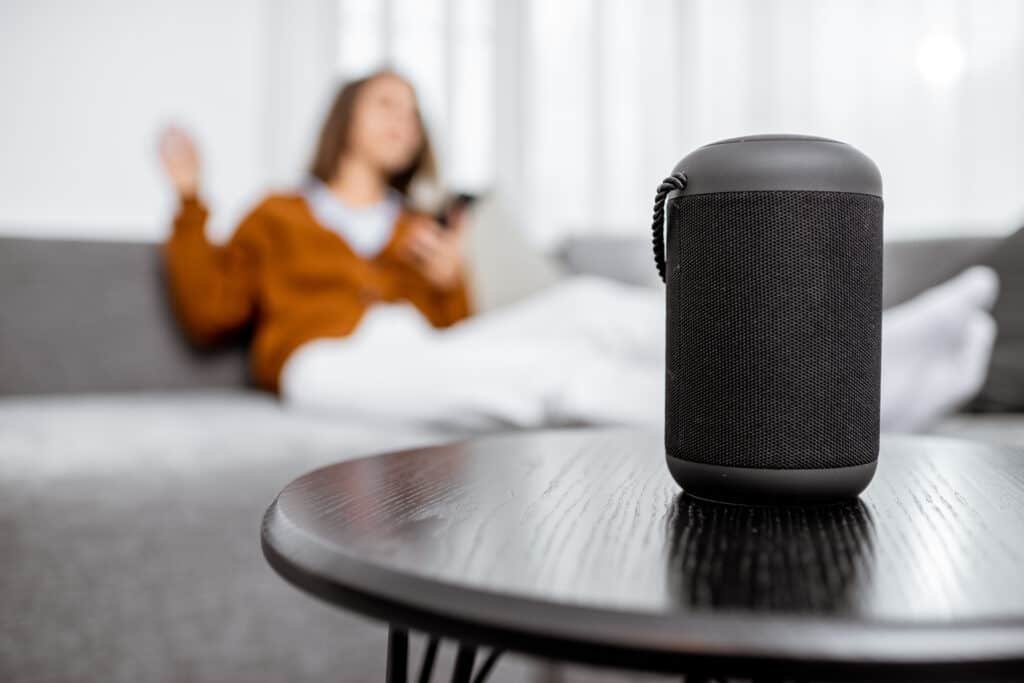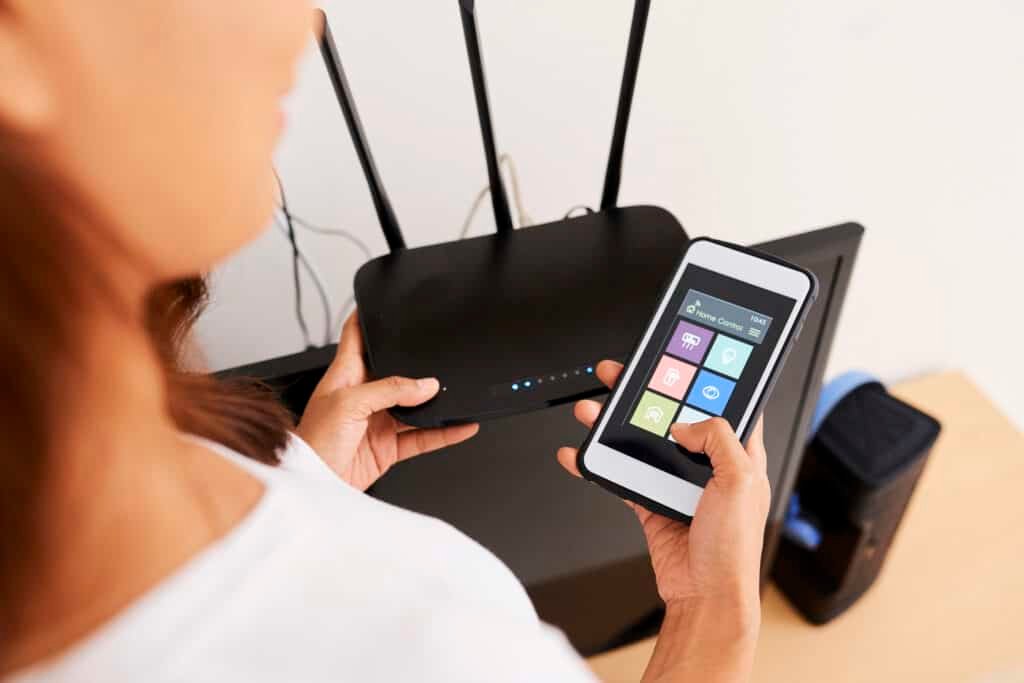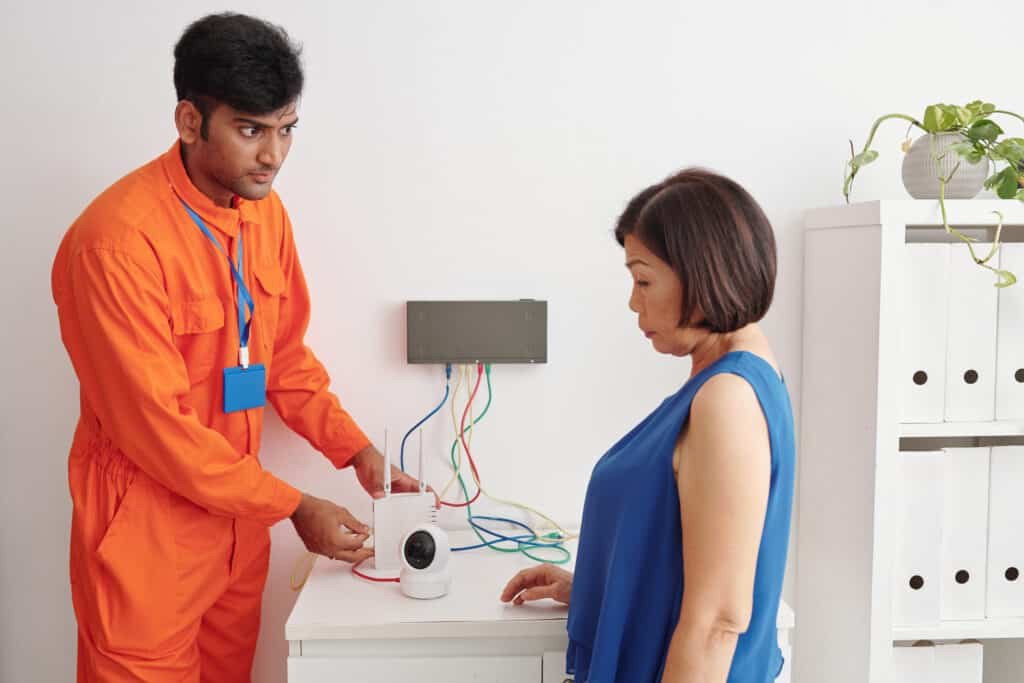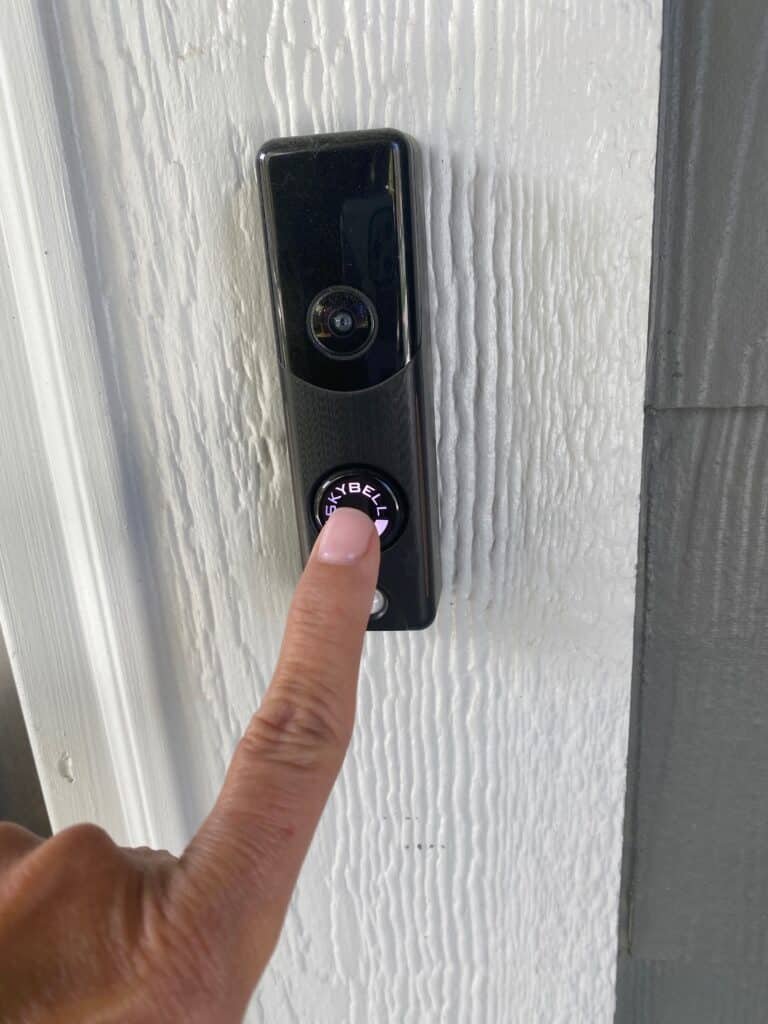A secure home environment to protect you from cybercriminals

We may earn a small fee from the companies mentioned in this post.
Protecting your home
We all know that we need to protect our computers from viruses and other malware, but did you know that your home could be vulnerable to hackers and cybercriminals? This article will show you how to adopt a secure home approach to your house and the technology you have installed within it.
Unfortunately, as more and more devices are connected to the internet, homes are becoming increasingly susceptible to attacks from cybercriminals. This article focuses on the best ways to protect your home from hackers.
There are some simple steps you can take to protect your home from these threats. In this blog post, I will share some tips on how to keep your home safe from hackers whilst accessing new technology that is constantly being developed and show you how to protect your smart home from hackers.
What is a secure cyber security home environment
A secure home approach to cyber security involves several steps that are aimed to protect your family’s online privacy and safety whilst at home. This includes installing anti-virus software on all devices, ensuring firewalls and Internet routers are running the latest firmware and keeping software up-to-date on your Personal Computers, laptops and smart devices. It also involves disabling unnecessary devices on your home network, backing up data regularly and setting up strong passwords etc.

Additionally, a secure home approach is ensuring family members are educated about the importance of cyber security and good cyber hygiene, so that they can make safe decisions when using technology connected to the internet.
Working from home has changed the workforce
Since the Covid pandemic the shift to working from home has had a massive impact on how people approach their work. It has created a new level of flexibility for workers, allowing them to better manage their time and personal commitments.
Employers are now offering more flexible schedules and remote options, making it easier for employees to balance their personal lives with their careers. Additionally, it is now easier than ever for employees to collaborate remotely with colleagues, and many companies are beginning to embrace virtual meetings and conferences as part of their workflow.
Whilst the flexibility of home working has been widely embraced, businesses have significant cyber security concerns for home workers, including the risk of hackers accessing sensitive information stored on employees personal devices. The risk of phishing attacks designed to steal passwords and personal data, malicious software such as viruses or ransomware, and identity theft have caused many businesses to evaluate their remote working cyber security risks register.

Most organisations are now focused on how to maintain security when employees work remotely. This may include a work from home security checklist or compulsory enhanced cyber security awareness training. Whatever policies businesses adopt, cyber security for remote workers will be high on the agenda of most business owners.
An office may no longer be a large corporate headquarters or an office building in a busy city or town. An office can be your kitchen, spare bedroom or living room. Therefore everything you connect into your home network could represent a risk to the corporate network you connect to.
As a Chief Information Security Officer I have more than 36 years experience in technology and IT security and have developed a strategy to protect home workers. I developed this article to help you stay safe at home, ensuring you develop a secure home network and adopt good cyber hygiene.
Beware of scammers on Vinted, checkout our informative blog and learn how to protect yourself
The emergence of smart technology in the home
In recent years, the rise of technology in our homes has been astronomical. Smart home devices range from thermostats and connected doorbells to voice-activated devices and home security systems. It is important to understand the risks when purchasing new technology to ensure you know how to secure your smart home and how to protect your home from hackers.

Technological advancements have enabled us to control more aspects of our everyday lives than ever before.
The proliferation of these technologies has allowed for an unprecedented level of evolution of technology in the home due to the the explosion of smart home devices but it has also increased the risk of cybercrime dramatically.
What is considered smart home devices and what makes them insecure
Smart home devices and associated technology can be described as any device or electronic (computer) system that can connect to the Internet, usually via a Wi Fi network. Devices include smart TVs, voice assistants, security systems and baby monitors. These devices are also know as Internet of Things (IoT). As you adopt a secure home environment it is important to understand how to protect IoT devices from hackers and cybercriminals.
You may find my article on what a cyber attack means useful as it describes the types of attacks you are preventing by adopting a secure home policy.
These (so called) smart devices are all vulnerable to cyber threats because they often operate on open networks with no encryption or authentication methods in place.

This means that anyone with the right knowledge (or tools) could potentially access these Internet connected devices and take control of them.
See my review of the 3 Best Home Security Cameras
To make matters worse, many of these smart home devices come with pre-set usernames and passwords which are often not changed by the user – making it easy for hackers to gain access. By following the advice within this article we will teach you how to secure smart home devices and protect your family from cyber criminals.
How to adopt a secure home approach to your network
It is very important you understand how to protect your home network from hackers. The core element of any home network is the Internet router. Home Internet routers are therefore a common target for cybercriminals who can cause a lot of damage if they gain access.
Your Internet router is the gateway between your home network and the outside world, so any vulnerabilities that exist in them can be exploited by malicious actors. One of the best ways to protect your home from hackers is to secure your broadband router.
Router security is critical for protecting your data and your devices from being hacked, stolen, or otherwise compromised.
Many people spend a considerable sum on door locks and burglar alarms to protect their valuables but spend little or nothing to protect their Internet router that protects their sensitive data from cybercriminals.

Routers are particularly vulnerable because they are often not patched or kept up-to-date with the latest software, leaving them open to flaws and potential breaches. When a hacker gains access to a router, they can intercept sensitive data passing through it and even redirect traffic, potentially leading to compromised networks.
Let’s assume someone is logging onto their bank account via a laptop within their home network and a cybercriminal has compromised their Internet router. The attacker can force the unsuspecting victim onto a bogus banking website, stealing their credentials.
Unauthorised control of a home Internet router could allow hackers to steal credentials and personal information, or infect computers with malware or ransomware.
Check out my review of the best anti-virus protects in 2023 – Anti-virus is an essential element to a secure home environment.
Hackers can take control of a router by exploiting known vulnerabilities in older models that may no longer be supported by the manufacturer. These old router models may have outdated encryption protocols or other security weaknesses that can be exploited by hackers to gain access.

In addition to exploiting vulnerabilities in routers, cybercriminals can also use phishing attacks to try and steal login credentials.
Phishing emails often contain links that appear to lead to a legitimate website but pass to a malicious site designed to fool the user and capture information such as usernames and passwords.
Home users need to ensure their Internet routers remain secure from cyber threats by performing regular updates on their firmware, using strong passwords for their devices, disabling remote access features if not needed.
See my blog on how to create a good password
Make sure your Internet router’s firmware is up-to-date with the latest security patches and updates
Adopting a secure home network security best practices approach will ensure your Internet connected technology is as secure as possible.
One of the most important tasks is to ensure your Internet router’s firmware is up-to-date with the latest security patches and updates.
Without regular patching, routers may contain vulnerabilities that could be exploited by malicious actors. It’s critical to ensure that all of your internet-connected devices are as secure as possible
To keep your router secure within a secure home environment you should always check for available updates from the manufacturer and install them promptly. You can check for updates by logging into the router’s administrative panel or using a mobile app provided by the manufacturer.

Once logged in, look for any “security” or “firmware” options and make sure you have all the latest versions installed. If you don’t see any “security” or “firmware” settings it might be time to buy a new router – as older models are more prone to being targeted by hackers due to their outdated encryption protocols and other vulnerabilities. Remember one of the best ways to protect your home from hackers is to secure the primary entry point, i.e. your home router.
Securing your Internet router
In addition to updating your router’s firmware regularly, there are several other steps you should take to protect this critical device within a secure home environment:
Change your Internet router’s default username and password
Disable remote access features if it is not required
Ensure the router’s firewall is enabled and check no one has opened any ports required for gaming – this ‘may’ render the device insecure
Enforce WPA2 wireless encryption, newer routers will have the superior WPA3 standard available.
Wi-Fi Security
You should also look out for any suspicious activity on your home Wi-Fi network such as unusual or slow behaviour of Internet-connected devices. Unfortunately it can be difficult to detect such behaviour and may be easier to change your Wi Fi network password instead.
Consider how many people have your Wi Fi network password, who have you previously given this information to, friends, colleagues or tradesmen. Imagine you had provided these individuals with keys to your house. Access to your home network should be seen as just as important.
If you are looking for the best ways to protect your home from hackers and cybercriminals then adopt good cyber hygiene. Changing your Wi-Fi password annually is good housekeeping as there are potentially dozens of items that are connected to your Internet router that you have long since forgotten about and may be insecure and inviting hackers to attack them.
You may find my article on best password managers a useful resource as you start to build a secure home environment.

If you notice anything out of the ordinary, immediately change your passwords and contact your internet provider or a cybersecurity professional for further assistance. By following these simple steps, you can help protect your home network from potential cyber threats and keep your data safe from prying eyes.
Securing your Internet of Things (IoT) devices is an important step in keeping your secure home network protected. IoT devices are anything that connects to the internet, such as smart appliances, voice assistants, or even surveillance cameras. These devices can be vulnerable to cyber-attacks if they’re not properly secured, so it’s important to take the necessary steps to ensure their safety.
The first thing you should do is to make sure all of your IoT devices are password-protected and running the latest firmware updates. As with any other device connected to the internet, manufacturers periodically release security patches and updates that you should apply as soon as possible. This will help protect your devices from the most common threats and vulnerabilities.
You should also consider using two-factor authentication for any accounts associated with your IoT devices. This adds an extra layer of security by requiring a code sent via text message or email to access a device or account.
Check out our informative blog on the best motorhome SatNav

If possible, you should also look into setting up a virtual private network (VPN). VPNs use encryption technologies that keep hackers from being able to view or intercept data sent over the internet connection. They also hide your IP address and location so that no one can access your information without authorisation.
Finally, when setting up an IoT device make sure to check what type of data it is collecting and how it’s going to use it. For example, if you’re installing a smart home surveillance camera be sure to understand its privacy policy before giving consent for its use.
You should also be aware of any potential security risks associated with having such a device on your network and take measures to mitigate them if possible.
Checkout our informative article on cyber security threats
Internet-connected devices
The Internet of Things (IoT) or Internet of Anything (IoA) has revolutionised the way we interact with our digital world, but it has also created a new set of security vulnerabilities that need to be addressed.
IoT devices are often used in home and office networks, but they can be just as vulnerable to attack as any other computer device.
IoT default passwords
As stated previously one of the best ways to protect your home from hackers is adopting good cyber hygiene, and an important part of that is protecting your home network. To protect your home network you should ensure all the devices that have Internet access have a unique password that you have input. Never use the default password that the device was set with.
Read how to create a good password article
IoT devices often use default or easily guessed passwords, making them easy targets for hackers looking to gain access to your network. To counter this vulnerability, you should always ensure that all of your IoT devices have strong, unique passwords that are regularly changed.
You may also want to consider additional authentication methods such as two-factor authentication or biometric authentication if available.
IoT design flaws
IoT devices can also be vulnerable due to weak hardware design and manufacturing processes. Since many IoT products are designed on tight budgets and rushed timelines, they often lack basic security features such as secure boot processes or secure firmware updates which can leave them open to attack from hackers who exploit these weaknesses. Poor design is how hackers could use smart home devices to spy on you.
As a result, it’s important to research an IoT device before purchasing and make sure it includes features such as secure boot processes and trusted platform modules (TPMs)
Support and firmware updates
Many manufacturers fail to keep their software up-to-date after releasing their products, leaving customers open to attack unless they actively monitor for new updates and patch their systems accordingly. Most secure smart home devices auto update firmware to automatically protect the device from attack.
It’s important not only to look out for updates but also to take steps such as disabling remote access features that may be unnecessary for your particular setup so malicious actors cannot access your system remotely through exploits in outdated versions of firmware or software applications running on the device itself.

Check for independent reviews of these devices and the stability of the manufacturer. If the supplier has a record of retiring devices after 12 months they will no longer provide firmware updates which would almost certainly render the device insecure and vulnerable to attack.
You may find my Blog on the 14 best ways to protect yourself from cybercriminals a useful resource.
Almost any device that can connect and access the Internet can become vulnerable to a cyber attack. You must ensure the device is regularly updated or can automatically update itself.
Connecting your latest gadget at Christmas and forgetting about it months later without ensuring it is still receiving regular updates can prove very risky. Every device you connect to the Internet can be compromised if you don’t set them up correctly.
Data protection and data leaks
You should also be aware of any security risks associated with the types of data these devices collect and how they use it. You should be careful when configuring you smart home devices as they could collect a significant amount of your data that could be insecurely stored or used for marketing or even malicious purposes.
Carefully review the instructions before you connect any device to your internal network. You should consider the data the device is monitoring and where it is stored and processed.
As part of developing a secure home network, it is worthwhile understanding where your data is located and how you access it.
The Information Commissioners Office (ICO) is an excellent source of information
Create a secure home network security checklist
Now you have read this article and hopefully understand how the secure home approach works, it’s a good time to create a checklist of the things you need to do at home.
- Enable default firewalls on all devices connected to your home network.
- Install good quality antivirus software, preferably a comprehensive package that includes anti-malware, spyware, and other malicious programmes on computers and mobile devices. (see my article of the best anti-virus products)
- Change all passwords from the device defaults to unique, strong passwords with at least 12 characters (see my article of creating a good password)
- Create a guest account for visitors so they can securely access your Wi-Fi without gaining access to any of your personal information or settings
- Use encryption technologies like WPA2/3 on your wireless router for added security when transmitting data over an unsecured connection
- Regularly check for updates and patches from vendors in order to keep devices running the latest software versions with the most recent security patches installed
- Add firewalls or content filtering programmes between any external networks and your local home network in order to monitor traffic passing through them and block malicious or unwanted content from entering your home network environment
- Make sure you have a backup plan in place in case of data loss due to malware infections or other disasters that can occur due to inadequate home network security measures
- Employ a secure home network design as outlined within this article
Conclusion – Adopting a secure home environment
To ensure the safety of your home network from potential cyber threats, it’s important to adopt a secure home approach. You should address poorly configured routers or Internet-connected devices (IoT). It is important to stay vigilant, not allowing random devices to connect to your internal home network.
By following best practice guidelines that are outlined within this blog, securely configuring your home network devices and protecting yourself against malicious actors, you can significantly reduce the chances of being attacked and your devices being compromised by malicious cybercriminals.
Taking small steps when purchasing and connecting devices could mean the difference between a safe and secure home network or one left open to exploitation by would-be hackers looking for any possible way to access your sensitive and personal data.
The best ways to protect your home from hackers and cybercriminals is by following the advice provided within this article and through the adoption of a secure home environment and good cyber hygiene.
How do you stay secure while working from home?
To stay secure while working from home, follow these steps:
1. Use a secure and updated Wi-Fi network.
2. Set strong and unique passwords for all your devices and accounts.
3. Enable two-factor authentication for your accounts whenever possible.
4. Keep your operating system, antivirus software, and applications up to date.
5. Use a virtual private network (VPN) when accessing sensitive information or connecting to your company’s network.
6. Be cautious of phishing emails and suspicious links.
7. Avoid using public Wi-Fi networks for work-related tasks.
8. Encrypt your sensitive files and data.
9. Enable a firewall on your home network.
10. Securely store your work-related files and documents.
11. Use a separate user account on your computer for work purposes.
12. Regularly back up your important data.
13. Follow your company’s security policies and guidelines.
Remember, maintaining a secure work environment is crucial to protect your data and maintain confidentiality.
Is it possible to be 100% secure when working remotely?
No, it is not possible to be 100% secure when working remotely. However, you can take various measures to significantly improve your security.
With over three decades of experience in the heart of London’s financial sector, I have dedicated my career to the pursuit of robust cybersecurity practices and IT leadership. As a Certified Information Systems Security Professional (CISSP), Certified Information Security Manager (CISM), Certified Chief Information Security Officer (C|CISO), Certified Ethical Hacker (CEH), and Computer Hacking Forensic Investigator (CHFI), I bring a wealth of knowledge and expertise to the table.
My journey in the field of cybersecurity has not only been about personal growth but also about sharing my insights with others. As an international speaker, I have had the privilege of addressing audiences worldwide, discussing the importance of cybersecurity in today’s digital age. My passion for knowledge sharing extends to my work as an author and blogger, where I delve into the complexities of cybersecurity, offering practical advice and thought leadership.
In my role as a CISO and Head of IT, I have overseen the development and implementation of comprehensive information security and IT strategies. My focus has always been on creating resilient systems capable of withstanding the evolving landscape of cyber threats.
My Master’s degree in Cybersecurity has provided a solid academic foundation, which, when combined with my practical experience, allows me to approach cybersecurity from a holistic perspective.
I am always open to connecting with other professionals in the field, sharing knowledge, and exploring new opportunities. Let’s secure the digital world together.

